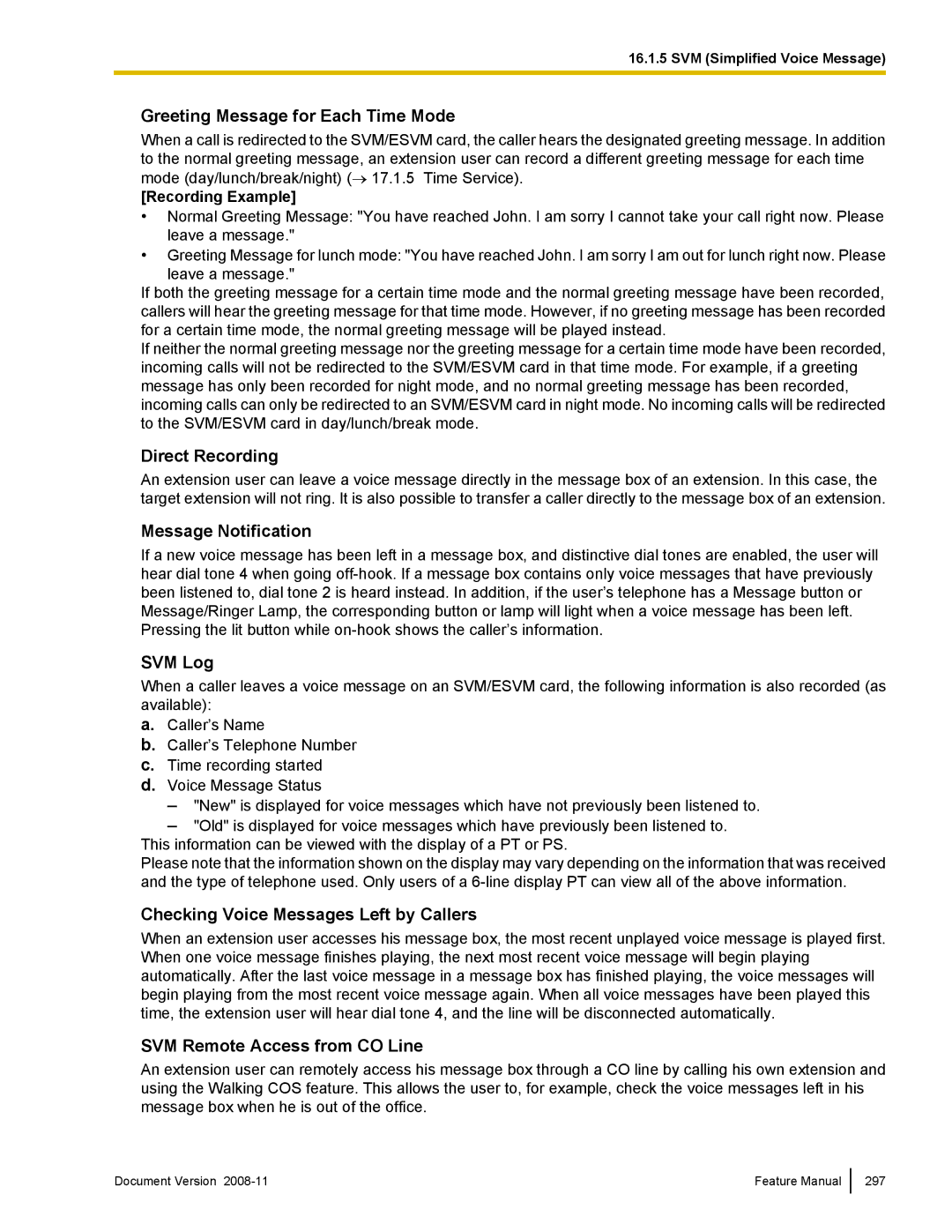
16.1.5 SVM (Simplified Voice Message)
Greeting Message for Each Time Mode
When a call is redirected to the SVM/ESVM card, the caller hears the designated greeting message. In addition to the normal greeting message, an extension user can record a different greeting message for each time mode (day/lunch/break/night) (→ 17.1.5 Time Service).
[Recording Example]
•Normal Greeting Message: "You have reached John. I am sorry I cannot take your call right now. Please leave a message."
•Greeting Message for lunch mode: "You have reached John. I am sorry I am out for lunch right now. Please leave a message."
If both the greeting message for a certain time mode and the normal greeting message have been recorded, callers will hear the greeting message for that time mode. However, if no greeting message has been recorded for a certain time mode, the normal greeting message will be played instead.
If neither the normal greeting message nor the greeting message for a certain time mode have been recorded, incoming calls will not be redirected to the SVM/ESVM card in that time mode. For example, if a greeting message has only been recorded for night mode, and no normal greeting message has been recorded, incoming calls can only be redirected to an SVM/ESVM card in night mode. No incoming calls will be redirected to the SVM/ESVM card in day/lunch/break mode.
Direct Recording
An extension user can leave a voice message directly in the message box of an extension. In this case, the target extension will not ring. It is also possible to transfer a caller directly to the message box of an extension.
Message Notification
If a new voice message has been left in a message box, and distinctive dial tones are enabled, the user will hear dial tone 4 when going
SVM Log
When a caller leaves a voice message on an SVM/ESVM card, the following information is also recorded (as available):
a.Caller’s Name
b.Caller’s Telephone Number
c.Time recording started
d.Voice Message Status
–"New" is displayed for voice messages which have not previously been listened to.
–"Old" is displayed for voice messages which have previously been listened to. This information can be viewed with the display of a PT or PS.
Please note that the information shown on the display may vary depending on the information that was received and the type of telephone used. Only users of a
Checking Voice Messages Left by Callers
When an extension user accesses his message box, the most recent unplayed voice message is played first. When one voice message finishes playing, the next most recent voice message will begin playing automatically. After the last voice message in a message box has finished playing, the voice messages will begin playing from the most recent voice message again. When all voice messages have been played this time, the extension user will hear dial tone 4, and the line will be disconnected automatically.
SVM Remote Access from CO Line
An extension user can remotely access his message box through a CO line by calling his own extension and using the Walking COS feature. This allows the user to, for example, check the voice messages left in his message box when he is out of the office.
Document Version | Feature Manual |
297
